Enough!

33:55.1S 018:26.5E
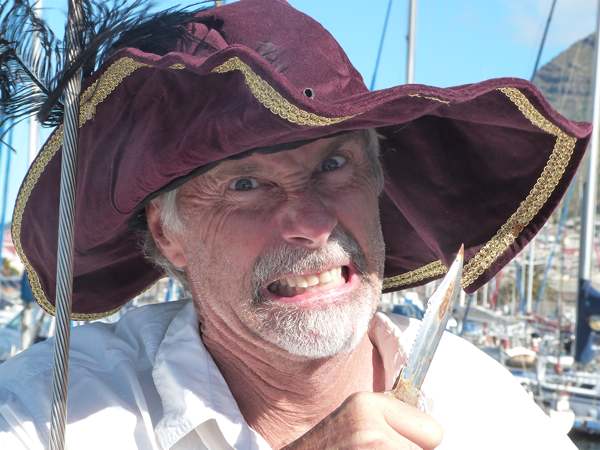
ENOUGH…
of the swashbuckling tales of seafaring “derring
do,” I say!!!
To hear Peter tell it, you’d think this voyage was just one
“…action displaying heroic courage” after another! Moreover, that I’m constantly a
damsel-in-distress waiting for the likes of Fletcher Christian from Mutiny on
the Bounty or, better yet, Russell Crowe as Master and Commander to rescue me
from the perils at sea!
Well, there ARE moments when my husband displays all the courage and physicality of Clarke Gable/Russell Crowe in his role as Captain of the good ship Peregrina. And, for that, I am eternally grateful that he is my Commander-in-Chief. Gulp! There… I said it!!!
But, life aboard a blue water cruiser is USUALLY much tamer than it was on the Bounty. And, most of our passages don’t include all those specially selected storms and tricky harbor entrances that Peter loves to describe in graphic detail! We spend a great deal of time enjoying the scenery and attending to the many mundane jobs necessary to keep our vessel ship-shape!
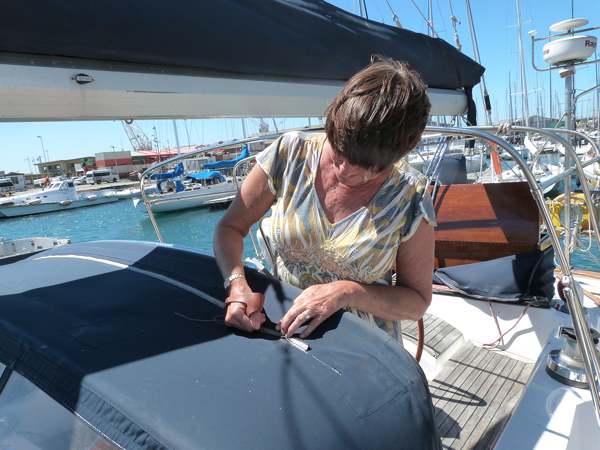
Here I am sewing the zipper back on our Bimini top over the cockpit and later polishing stainless steel before replacing the canvas awning. Life doesn’t get more “everyday” than this…
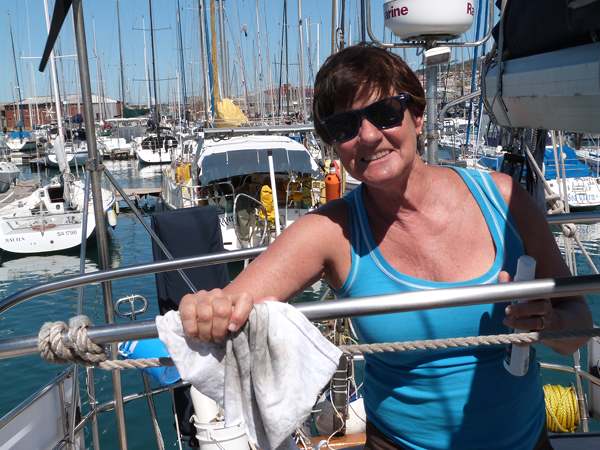
To catch up on the past couple weeks….
Our visit to Knysna was very relaxing. After negotiating the narrow gap between the two sandstone cliffs known as the Heads and, (Yes, Peter, I know…) once proclaimed by the British Royal Navy the most DANGEROUS HARBOR ENTRANCE IN THE WORLD (!!!), we anchored out in the sheltered Knysna Lagoon which was “flat as a millpond.” It’s quite shallow at low tide and the reefs provide protection from the nasty ocean waves in the distance.
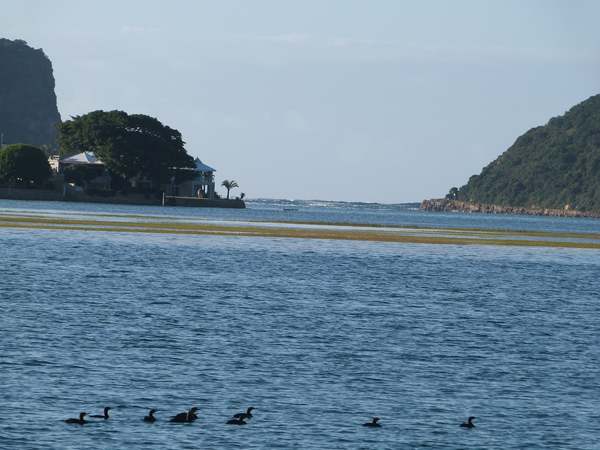
Each day, we’d dinghy into the harbor and stroll around this
lovely little resort town.
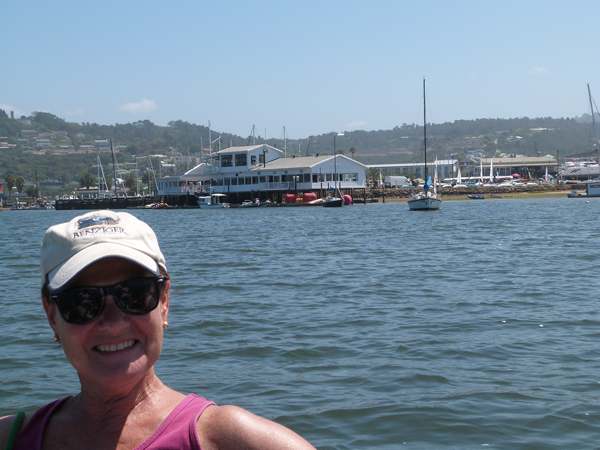
Knysna was once the capital of the South African timber
industry and supplied indigenous timber, pine wood and Eucalyptus from the
early days of the Dutch East India Company.
It is now known for its fine, skilled woodworkers producing handcrafted
furniture and art objects.
The story goes that Knysna was founded by George Rex, the illegitimate son of King George III and a certain Hannah Lightfoot who was banished to the colonies when he was in his 30’s to avoid embarrassment to the crown. (Hence, the interesting last name) Rex never admitted nor denied the rumor but, unlike most immigrants, he arrived with bundles of money and soon became one of the richest timber merchants in the region. The area is known for some of the most beautiful vacation homes along the coast. We passed several as we made our way into the harbor.
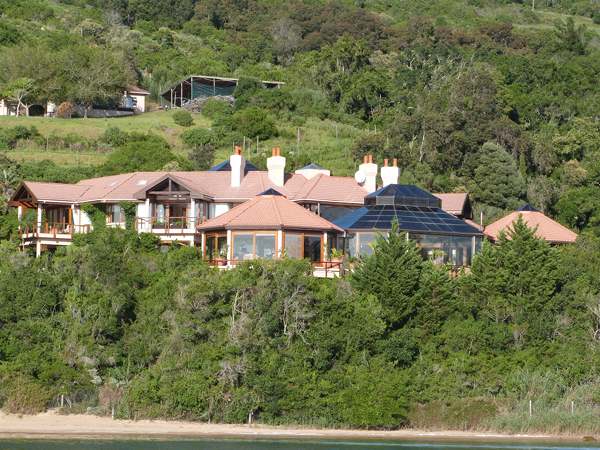
There are great beaches here as well as fabulous restaurants. It’s popular with locals and international tourists who come to see and be seen.
In Knysna, they are very vigilant about making sure that no boats discharge “black water” (if you know what I mean) into the marina basin. There are HUGE penalties and, soon, we understood why. Knysna is the Water Polo capital of South Africa! Every weekend, two portable water polo courts are set up in the harbor and high school and college teams from all across the country come to compete! Here’s a team diving in to start their game! Family, fans and tourists all enjoy the events while sitting at little restaurants and cafes all around the perimeter of the marina.
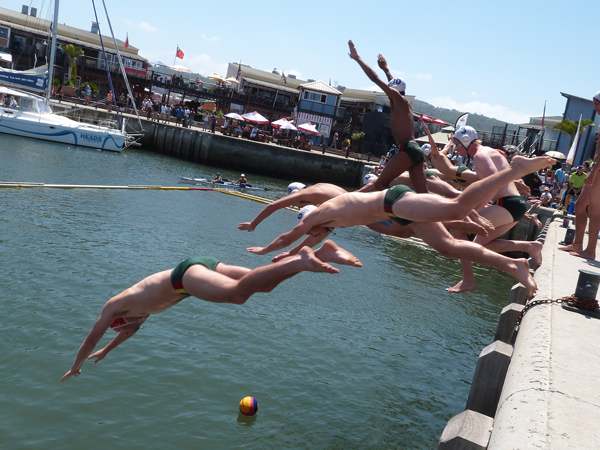
Knysna boasts one of the prettiest little Anglican Churches we’ve seen. Actually, St. George’s parish has two Anglican Churches on the property! The first church was built in 1855 and when the congregation outgrew it, a second church was built in 1926. Interestingly, the new church wasn’t consecrated until 1937 when all the bills were paid! (Wouldn’t it be refreshing if we held off celebrating a purchase until AFTER we had paid for it?) Regular services are held in the new church but special events are still celebrated in the little chapel. Peter and I enjoyed Sunday Service there and, afterwards, delicious coffee cake and apple strudel in the Parish Hall.
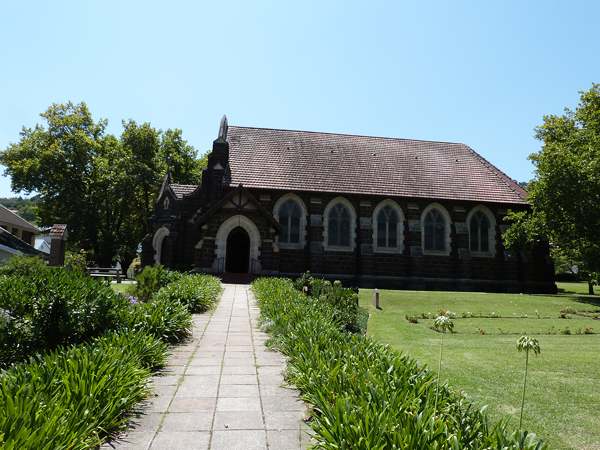
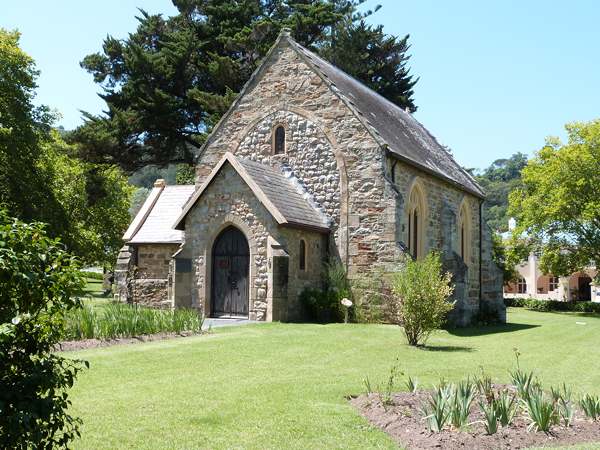
Soon it was time to leave Knysna to head for the bright
lights and big city of Cape Town.
Did you know that the Cape of Good Hope is not actually the
southernmost tip of South Africa? The
spot where the warm Indian Ocean meets the cold Atlantic Ocean is actually at
Cape Agulhas. Early Portuguese explorers
called it Cabo das Agulhas (Cape of Needles) when they discovered that their
compass needles showed no real deviation between magnetic and true north here.
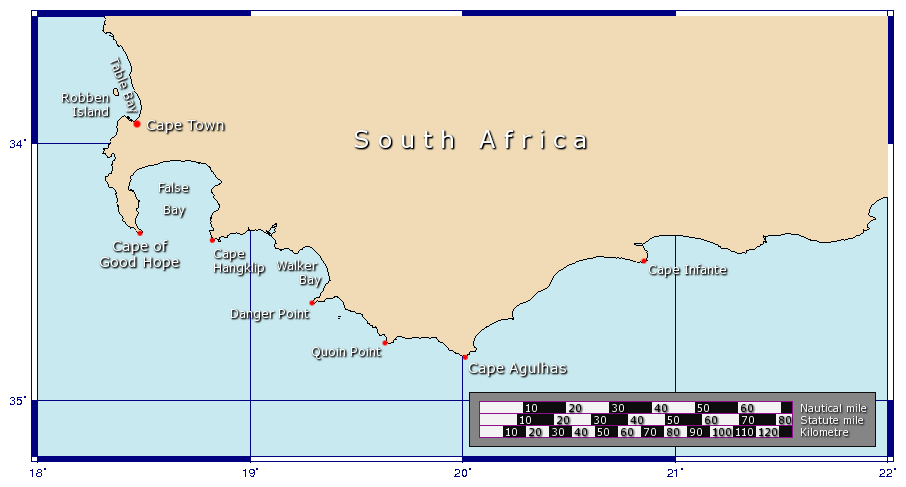
We were thrilled to see the lighthouse at Cape Agulhas as it
signaled our official crossing of the Indian Ocean and our entry into what, we
hoped, would be the much calmer waters of the Atlantic. Yes, even I must admit that the Indian Ocean
was, by far, our most difficult passage of the entire voyage and I was glad to
leave it behind! But, there’s no doubt
that Peter will have more tales of “derring do” to report before our
journey is complete.
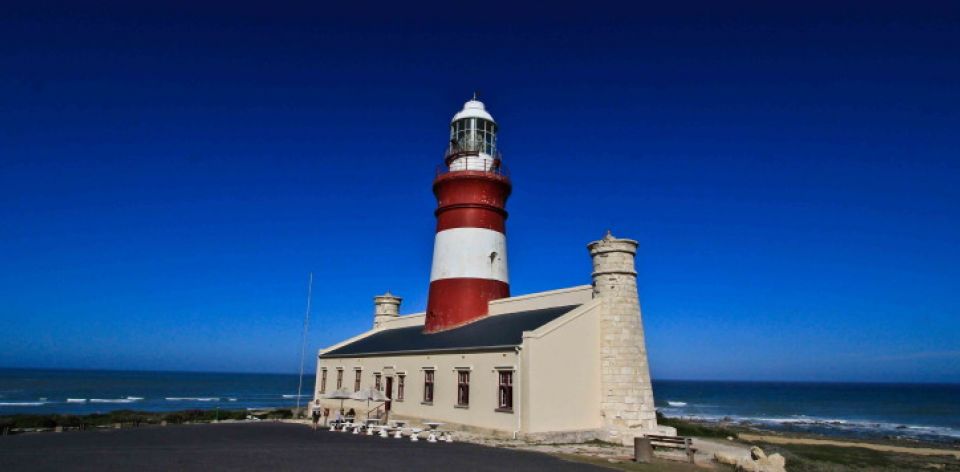
Rounding Cape Agulhas, we still had about 120 miles to go before reaching the Cape of Good Hope and the beautiful cruise up the southwest corner of South Africa to Cape Town. But, a little history first…
The Portuguese explorer, Bartholomeu Dias, was the first
European to round the Cape in 1488. He
named it Cabo da Boa Esperança (Cape of Good Hope). For the next two hundred years, trading ships
mostly bypassed the Cape as they made a beeline for the riches in the Far
East. But, by the end of the 16th
century, British and Dutch traders began to challenge the Portuguese. They determined that the Cape, with its’ many
sheltered bays, would make an ideal stopover for their scurvy-ridden crews.
The Dutch East India Company (Vereenigde Oost-Indische Compagnie or VOC) was the first to establish a permanent settlement on the Cape. Jan van Riebeeck was Commander of the settlement which was called Kaapstad (Cape Town) from 1652-1662. Originally, they had no intention of colonizing the country. They just wanted to establish a secure refreshment base where ships could find shelter and stock up on fresh supplies of meat, fruits and vegetables. However, by 1657, van Riebeeck began allowing VOC employees to farm the land independently – giving birth to the Boers and beginning the colonization of South Africa. Soon after that, slaves were imported from West Africa, Madagascar, India, Ceylon, Malaysia and Indonesia –inter-mixing with the population and laying the foundation for the unique diversity of cultures and races we see today.
We arrived in Cape Town just before dawn and waited for daylight. A couple hours later, we were approaching the Royal Cape Yacht Club on a beautiful day and you can see the mantel of clouds pouring down the mountain like a tablecloth.
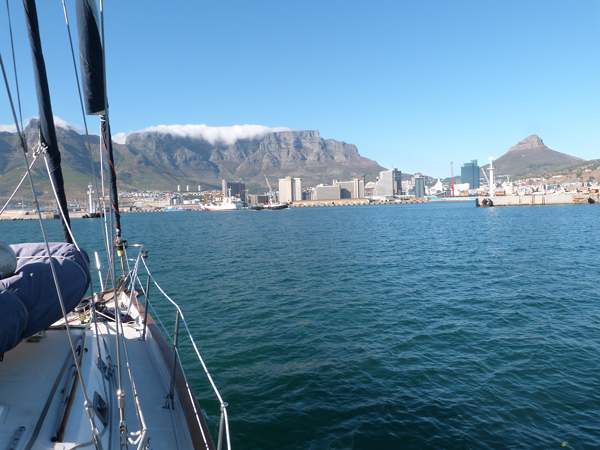
In December of 2012, Table Mountain was named one of the world’s New Seven Natural Wonders of Nature after a global poll that allowed anyone in the world to vote via telephone, text, or social media networks. The other winners were the Amazon Rainforest, Vietnam’s Halong Bay, Argentina’s Iguazu Falls, South Korea’s Jeju Island, Indonesia’s Komodo Islands and the Philippines’ Puerto Princesa Underground River. We’ve checked off all but Jeju Island on our Bucket List!
Table Mountain’s selection is well-deserved. From our berth here in the Royal Cape Yacht Club Marina, this is the awe-inspiring view we wake up to every morning!
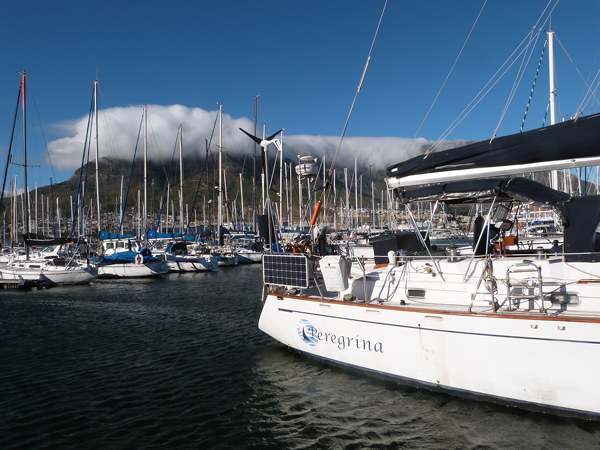
More on Cape Town and the surrounding areas in the next installment of Where in the World are Margie and Peter?
________________________________________________________________________________________________________________
P.S. We LOVE hearing from you but please send a NEW email and do NOT hit the reply button to this message. Thanks!
--
--
--
--